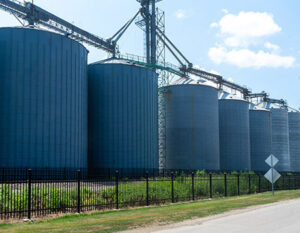Measuring pipes accurately is crucial in plumbing, construction, and DIY projects. Here’s a guide to measuring the inside diameter (ID), outside diameter (OD), and surface area for different types of pipes. It is especially important when looking to protect against corrosion, abrasion, erosion or chemical attack. As you will need the surface area of the pipe in order to purchase the right amount of coating.
It’s also important to take the skill and familiarity of the crew applying the coating into account. For experienced crews USI suggests including a 15% waste factor when purchasing coating. For inexperienced crews we suggest a 25% waste factor.
Tech data sheets will often show a theoretical coverage rate, which is great for calculating how much you need. But those are theoretical because it doesn’t account for waste or other environmental factors.
How to Measure Pipe Size for Plastic, Copper, and Steel Pipes
Outside Diameter (OD)
- Use Calipers: For accurate readings, especially on smaller pipes, use calipers. Place the caliper jaws around the pipe’s outside edge and record the OD measurement.
- Use a Measuring Tape: Wrap a flexible measuring tape around the pipe’s circumference, dividing this by π (3.14159) to get the OD.
- Example: If the circumference is 9.42 inches, divide by 3.14159, resulting in an OD of approximately 3 inches.
- Use a piece of string: Alternatively you can use a piece of string, wrap it around the pipe and mark where it meets itself, lay the string flat and measure that with a tape measure.
Inside Diameter (ID)
- Calipers for Uninstalled Pipes: Insert calipers inside the pipe, extending them to the opposite inner edge for an ID reading.
- Using Known Wall Thickness: If the pipe is installed, subtract twice the wall thickness from the OD to get the ID.
- Example: For an OD of 3 inches and a wall thickness of 0.1 inches, the ID would be 3 – (2 × 0.1) = 2.8 inches.
How to Measure Pipe Surface Area
To calculate surface area, determine the pipe’s length and outer diameter. Use the formula for the surface area of a cylinder:
Surface Area = π × OD × Length
Example: If you have a pipe with an outer diameter of 9 inches and a length of 12 feet (144 inches).
Surface Area = π × 9in × 144in
Alternatively you can use 3.14
Surface Area = 3.14 x 9 x 144
The surface area of this example would be 4,069.44 square inches or 339.12 square feet.
This applies to copper, plastic, or steel pipes, enabling you to estimate materials for coatings or insulation.
Tips for Specific Pipes
- How to Measure Plastic Pipe Size: Plastic pipes may vary in wall thickness (Schedule 40 vs. 80). Measure both the ID and OD to confirm pipe classification.
- How to Measure Copper Pipe Size: Copper pipes often have an ID stamped on them. For accurate sizing, measure the OD and refer to copper piping tables to verify.
- How to Measure Steel Pipe Size: Steel pipes are frequently classified by nominal size, so measure the OD and ID, then consult steel pipe sizing guides to confirm size.
Conclusion
Accurate pipe measurements ensure compatibility and longevity for fittings, coatings, or repairs. For additional guidance on how to measure plastic, copper, or steel pipes, reach out to a local supplier or expert. Unconventional Solutions is always here to help if you have questions or concerns about your coating project.















